
views
X
Trustworthy Source
American Academy of Family Physicians
Organization devoted to improving the health of patients, families, and communities
Go to source
Peppermint oil is the product distilled from the leaves, stems, flowers, and bark of the plant.[2]
X
Research source
Beyond its medicinal uses, peppermint oil can also provide relaxation.[3]
X
Research source
You can use peppermint oil to aid your health and wellbeing and to relax your body and mind.
Using Peppermint Oil for Health Benefits

Reduce a fever. Applying 2-3 drops of peppermint oil on specific sections of your body may help reduce your fever. You can apply the oil directly or dilute it with a drop of almond or olive oil. Rub the peppermint oil on to one or several of the following areas: Forehead and temples Back of the neck Back Bottoms of feet

Clear your sinuses. Congestion can cause headaches and other discomfort. Breathing in steam with peppermint oil can help clear your sinuses of any congestion and relieve any discomfort or pain you have. Boil a pot of distilled water and remove it from the stove. Add a few drops of peppermint oil. Cover your head and the edges of the pot with a warm and moist towel. Inhale the steam deeply for a few minutes to help clear your sinuses.

Open up your respiratory tract. Much like your sinuses, your respiratory tract may get congested. Rubbing some peppermint oil on your chest can open up congested airways. Use 2-3 drops of peppermint oil and rub it on your chest. If you have sensitive skin, dilute the peppermint oil with a drop of almond or olive oil.

Relieve a headache. Peppermint oil has long been used to ease the pain of tension headaches and, in some people, migraines. Breathing in or rubbing on peppermint oil may relieve your headaches within 15 minutes of application. Apply 1-2 drops of peppermint oil to your temples, behind your jawbone, and/or across your forehead for relief. Dilute the peppermint oil with 1 drop of almond or olive oil if you have sensitive skin.

Sniff peppermint oil to ease nausea and/or motion sickness. Taking a whiff of peppermint oil may quickly ease any nausea or vomiting you experience. Open the bottle of peppermint oil and take a small sniff of 1-2 seconds. If you find that this helps relieve your nausea, vomiting, or motion sickness, consider boiling diffusing the scent through your home to maximize its effectiveness.
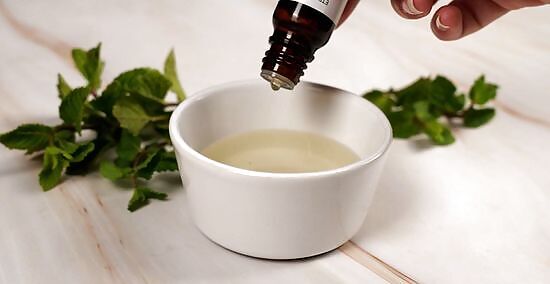
Soothe skin irritations. Peppermint oil can soothe skin irritations, burns, and dryness. Mix together 15 or fewer drops of peppermint oil with one ounce of carrier oil, such as almond or olive. Gently massage the mixture onto irritated skin. Stop rubbing the peppermint oil mixture on to your skin if you feel any additional burning or irritation.
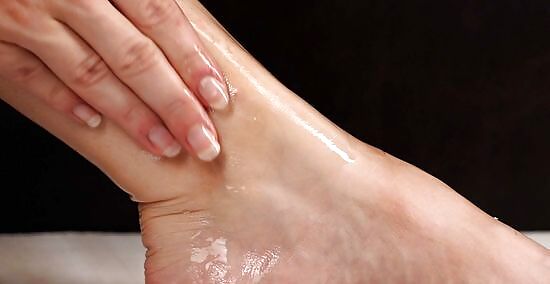
Relieve joint and muscle pain. Peppermint oil is a great way to relax the body. If you are experiencing any joint pain, including from rheumatoid arthritis, massaging a bit of peppermint oil can quickly relieve your discomfort. Peppermint oil can also temporarily relieve pain or discomfort from overworked and strained muscles. Dilute 15 or fewer drops of peppermint oil with one ounce carrier oil such as sweet almond or coconut oil. Then rub this either directly onto painful joints or sore muscles for quick relief.
Relaxing with Peppermint Oil

Massage yourself with peppermint oil. Massages can help relieve stress and relax you. Combining peppermint with your massage can relax you even more. Mix 15 drops of peppermint oil with a carrier oil such as coconut or olive oil to minimize the risk of skin irritation. This can also moisturize your skin. Start by massaging your feet and work upward towards your head. Massage in a pattern such as circles or broad strokes that you find relaxing. Focus on your feet, legs, wrists or temples. Massage gently so that you don’t stimulate your circulation, which may make it more difficult to relax.

Melt into a peppermint oil infused bath. Let your body and mind relax as you soak in a bath infused with peppermint oil. This may also soothe other conditions such as sore muscles and joints or headaches. Fill the tub with water that is 37 and 39 degrees Celsius. Mix 15 drops of peppermint oil with 1 ounce of carrier oil such as olive, coconut, or sweet almond. You can also use 15 drops of oil and 16 ounces of Epsom salts. Pour your oil mixture into the bath by holding it under the tap to distribute it evenly. Stay in the bath for 15-20 minutes. Dim the lights and use bath props such as pillows or a warm washcloth over your eyes to enhance your relaxation. Consider burning a peppermint oil candle to relieve tension.

Spritz your bed linens. You might have sensitive skin and can’t apply peppermint oil. You can still enjoy the calming benefits of peppermint oil by spritzing your bed linens. This can relax you without irritating your skin. Mix 30-40 drops of peppermint oil with 1.5 ounces of distilled water in a clean spray bottle. Add more peppermint oil if you want a stronger scent. Mist your sheets, comforter, duvet, or towels with the peppermint oil spray. Avoid spraying too much because it might irritate your skin.
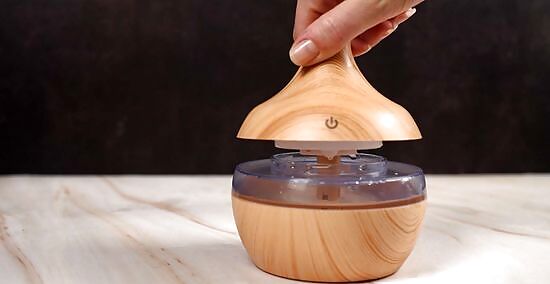
Use the peppermint oil with a diffuser. Spread the scent of peppermint oil with candles, humidifiers, and scent diffusers. These offer the same types of calming effects as baths, massages, or spritzes. Purchase candles containing natural, pure peppermint oil and made of beeswax, soy or another vegetable-based wax. Light candles for 30 minutes to help the scent circulate for a relaxing environment. Use a scent diffuser to disperse your peppermint oil through the air. A humidifier or cold-air vaporizer can also diffuse the scent to relax you. Build your own diffuser by putting peppermint oil in a bowl of hot water.
Using Peppermint Oil Safely
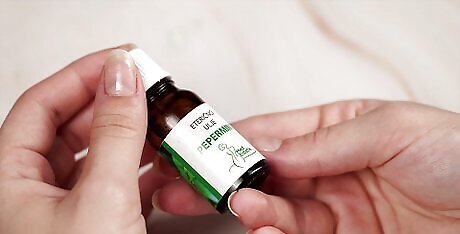
Read the label. Peppermint oil may be too strong for you. Read the label of any peppermint oil you choose. This can alert you to contraindications and may prevent a bad reaction. Look for therapeutic grade peppermint oil with contraindications and other warnings. Reading the label of the essential oil closely. For example, you should see a warning about using peppermint oil if you are pregnant or breast feeding. Consider a different brand if you can’t find a label or the one you’ve chosen isn’t therapeutic grade.
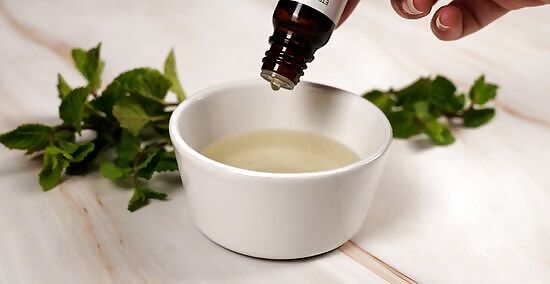
Dilute peppermint oil with a carrier oil. Peppermint essential oil is very strong and you should only sparingly use a “neat” or undiluted oil on your skin. Carrier oils decrease the strength of peppermint oil. They also moisturize your skin. Choose mild oils such as coconut, olive, avocado, and almond. Mix 7-15 drops of peppermint oil to each fluid once of carrier oil, depending on how strong you want the aroma. Avoid diluting your peppermint oil with water or other liquids.
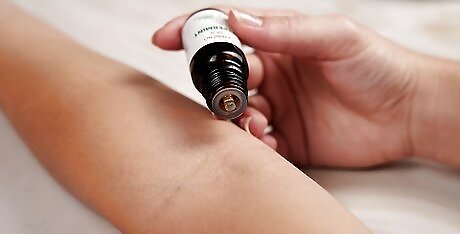
Do a patch test. Since peppermint oil can be very strong, it’s important to ensure it doesn’t irritate your skin before you use it. Apply 1-2 drops on the inside of your elbow. Use the peppermint oil if you don’t notice any reactions after 24 hours.

Notice potential reactions. Peppermint oil is generally safe for use. This is especially true if you do a patch test. However, you may still have a bad reaction to peppermint oil. If you notice any of the following signs of an allergic reaction, seek prompt medical attention: Redness or itching Hives Skin that is warm to the touch Blisters Scratchy throat Swelling Red eyes Trouble breathing


















Comments
0 comment